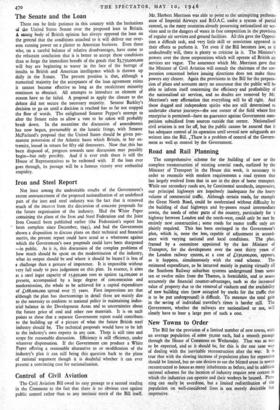Road and Rail Planning
The comprehensive scheme for the building of new or the complete reconstruction of existing arterial roads, outlined by the Minister of Transport in the House this week, is necessary in order to reconcile with modern requirements a road system that has largely evolved from that in use in the days of horse transport. While our secondary roads are, by Continental standards, impressive, our principal highways are hopelessly inadequate for the heavy volume of commercial traffic. Although certain roads, for example the Great North Road, could be modernised without difficulty by the building of dual highways and by-passes round intermediate towns, the needs of other parts of the country, particularly for a highway between London and the north-west, could only be met b} entirely new .construction ; some roads for motor traffic only are plainly required. This has been envisaged in the Government's plan, which is, none the less, capable of adjustment in accord- ance with varying national and local conditions. The plan, framed by a committee appointed by the late Minister of Transport, for the development over the next thirty years of the London railway system, at a cost of £23o,0o0,000, appears, as it happens, simultaneously with the road scheme. The estimated expenditure, to be incurred mainly in putting virtually all the Southern Railway suburban systems underground from some ten or twelve miles from the Thames, is formidable, and to assess accurately the financial counter-advantages, such as .the increased value of property due to the removal of viaducts and the availability of new building sites (now occupied by tracks for the traffic that is to be put underground) is difficult. To measure the total gain in the saving of individual traveller's times is harder still. The Government, whether the railways are nationalised or not, will clearly have to bear a large part of such a cost.


























 Previous page
Previous page